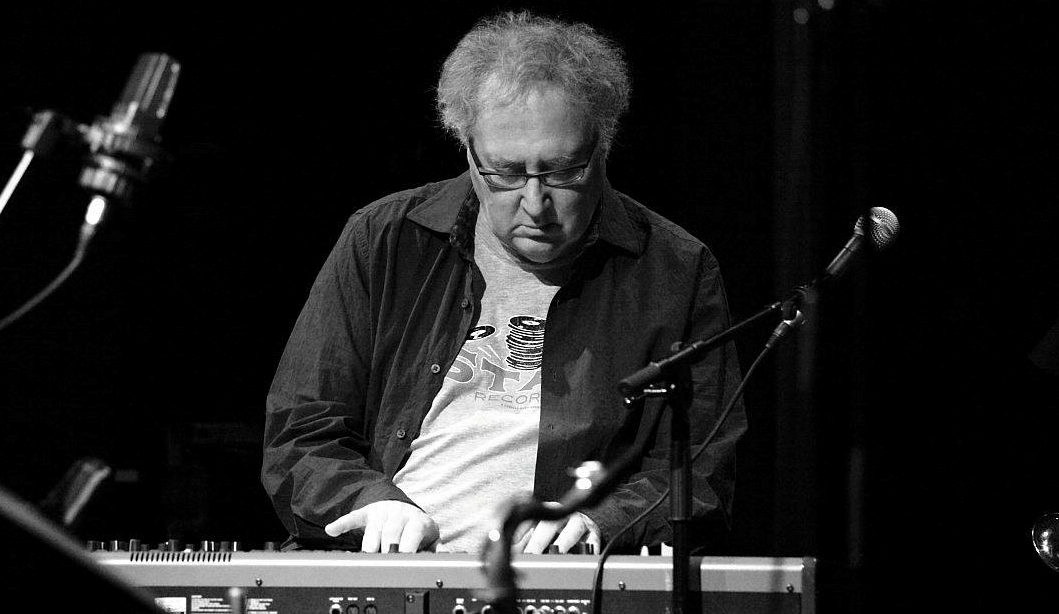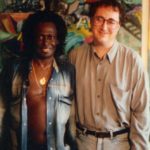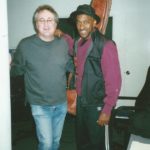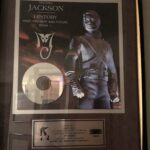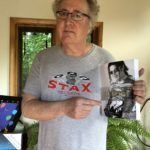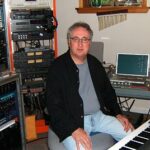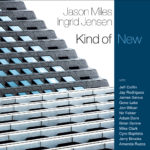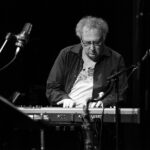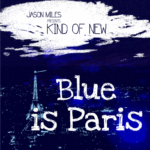Considering how long I have been detailing the « HIStory » album booklet, it seemed very natural indeed that the name of Jason Miles would raise my attention. Gathering information about this musician was a wonderful exploration and that’s why I wanted to get an interview with the renowned Jazz keyboardist. It was an opportunity to evoke and discuss his works with Marcus Miller and Miles Davis among his rich discography. Please, enjoy this musical journey!
First of all, how did you grow a passion for music and eventually made a career out of it? How did you choose this particular instrument too?
In the 1950s in NYC my parents bought a new Hi-fi system and that’s when a lot of music came into my home. All different kinds from Broadway to Pop and Jazz. I started out playing accordion even though I wanted to play drums. At 12 I switched to piano and when I started to play in bands at 13, I got into organ as I studied with a great musician in Brooklyn, Rector Bailey, who played like 5 different instruments.
Your generation discovered the first synthesizers in the 1970s. Did you realize that some evolution and revolution was at work then?
As the music grew, so did the instruments. Companies like Moog and ARP were taking the instruments as far as they could go at the time. It really wasn’t until polyphonic processor based synths like the Prophet-5 and Oberheim came on the scene that things really exploded, and more and more artists and musicians became interested in synthesizers. It really was dealing with voodoo back then because the concept was so new and you needed a whole other level of education to get into electronic music. I really hung with it in a big way.
You seem to be as comfortable playing the keyboard as programming it, while arranging and composing at the same time. Is there any of these tasks that you prefer doing or do you feel like they are part of a more global work?
I think it all goes together. Whenever I worked with an artist, the first thing they noticed was that their music sounded great and came alive. When I did albums and sessions it was with many artists as a synth programmer. I however was growing by leaps and bounds in the development of my production, playing, composing. When it came time for me to go on my own in 1993 I was ready for it all to work together, and it did!
You worked on numerous studio sessions in the 80s and 90s. Was it very different to work on and come up with a Pop music album compared to a Jazz record?
Good question. Even though all the albums were finally crafted when you made a Pop album it was very specific and really had to be fine tuned because of the nature of the music and the artist and audience. Very meticulous and even though chances were taken in Jazz like with Miles taking chances was the name of the game with me. You wanted something very cutting-edge and I always thought on the outside.
I would like to say that I took Jazz with synthesizers to the next space when we made Tutu. Even though synthesizers were used on some Jazz albums they weren’t the centerpiece. But with « Tutu » they were the centerpiece to accompany Miles. They were there because my sounds and textures fit the music perfectly. I don’t think there were many guys thinking the way that I did with synthesizers and the creative possibilities.
One of the most important persons you met over your career was Marcus Miller with whom you then collaborated on Jazz fusion music. How did this all start?
I met Marcus in 1979 after another bassist Tom Barney couldn’t make my first sessions as a leader to make my first album. He however recommended Marcus who did the album with me « Cozmopolitan ». I used to always see him in NYC after that over the years. One night at a club in NYC Michael Brecker told drummer Lenny White he should meet me as I was in the club. Lenny came over and asked me a few questions about music and production. He dug that I was into producers like Trevor Horn. In January 1985 Lenny called me and told me that he and Marcus were going to make a new album of a band they were forming and Marcus would be calling to see about me doing some sessions with them. Marcus called the next day—I went in the studio with some synths and it sounded great and we worked together for 10 years after that.
On Miles Davis album « Tutu », Marcus Miller composed and produced while you programmed the synthesizers. It has been said that, unlike his usual process, Miles Davis played the trumpet on pre-recorded musical parts. Was he very keen on new technologies in the studio?
Miles wanted the new technology and embraced it big time. When he started to really hear the album he got more and more convinced on what I could do. We spent a lot of time together for 5 years. He always knew I was on the cutting edge and that’s where he always was for decades.
How did you feel when you read Roberta Flack saying that you contributed, along with Marcus Miller and Miles Davis, to design the new outline of Jazz?
I was very flattered by that because Roberta’s standards were very high and for her to feel that way about me really gave me an incredible level of satisfaction and validation. On her album Oasis we really also ramped up the vibe notch.
The importance of Miles Davis on your career is inescapable, especially on the album « Kind Of New » that you defined as « In the spirit of Miles Davis ». What can you say about that very special encounter?
Well, in 2005 I made my « Kind of Tribute » album to Miles called « Miles to Miles ». It was my view of what kind of musical influences Miles would be absorbing in the 21st century. « Kind of New » is my view of bringing back the small electric ensemble that were such such big influences on me when I was first formulating my musical personality. Everybody should check out Miles Davis « The Cellar Door Sessions » and hear Miles with Keith Jarrett in Rhodes and Michael Henderson on Electric bass. It took the « Bitches Brew » album concept to the next level. Miles loved how Keith Jarrett played the Fender Rhodes and it shows on that box set. That’s what I was going for with « Kind of New » – the next exploration for musicians to take the melody and grow and interact with each other as we improvised over the groove. Miles truly was a genius and a good friend whom I miss everyday.
I really appreciated the theme of your latest album entitled « Blue Is Paris ». Can you tell us more about its genesis and creative process?
I was in Paris right after the 2015 terrorist attacks and was doing press for the first « Kind of New » CD. I saw a certain level of sadness in the city but also felt a spirit of courage and togetherness like “we are not going to give in to these people”. I was planning on doing a new « Kind of New » project but different because I was moving away from playing with Ingrid Jensen and exploring new players. I remember my father giving me Ella Fitzgerald’s album « Lullabies of Birdland » in 1958 – it was that song done 12 different ways by different arrangers. I thought I could do this with a song like « Blue is Paris ». So I used 4 different trumpet players to come up with original melodies over my track. I then added vocals and other lead instruments. The highlight was to be able to play it 4 times in Paris on my last tour. Very emotional…
Making 10 different versions of the same track is a concept that can only work in Jazz music, don’t you think so?
Not really. How many standards have been rearranged and changed by so many artists. See how many times « My Funny Valentine » has been done.
How did they reach you to work on Michael Jackson’s « HIStory » album?
They were recording at the Hit factory and there were issues with the breakdown of the song in the middle and they weren’t getting it to happen. Someone at the Hit Factory said : « You should call Jason Miles. He’s worked with Miles Davis, Luther Vandross, Marcus Miller… » That was good enough for them to call me. I initially turned down the session because they wanted me to immediately come to the studio and I had an artist in from Switzerland and just couldn’t pick up and leave. They called somebody else and I guess it didn’t work out so good so they called me back and we then set up a time for me to do the session.
You were credited on synthesizer programming on that album. Any memories of those studio sessions?
Just that they played the music really loud, left me in the room by myself to work, gave me some direction and I went for it. 6 months later I was at the Hit Factory and one of the assistant engineers said to me : “Jason, you are the man ! They loved what you did on that Michael Jackson song and you made it on the album ! » Very cool ! A year later I saw a package outside my door by UPS and it was a 10 million platinum selling disk of « HIStory » – an honor for sure!
As a conclusion, can you tell us about one of the best moments you had in the studio?
So many… Meeting Miles for the first time, producing Sting, some difficult but also many fun times with Luther… I guess the best times where when we would be working and some major artist or producer came in and heard what we were doing and then would say in front of everybody : « Jason, your work is incredible ! This music sounds amazing ! » I got that a few times. It was also cool to work with a guy like Joe Sample who was a piano and Rhodes player of the highest order and embrace what I was doing on the Crusaders album. We became great friends after that. So many incredible memories even happening to this day. I can’t say I haven’t had an interesting life!…
